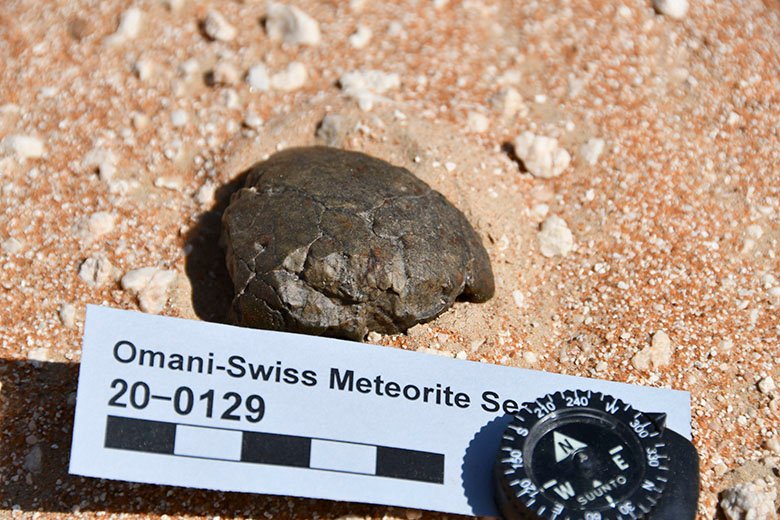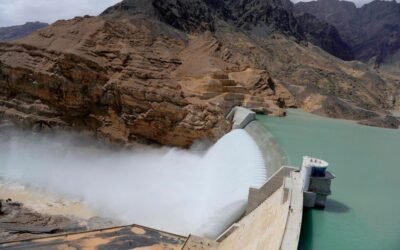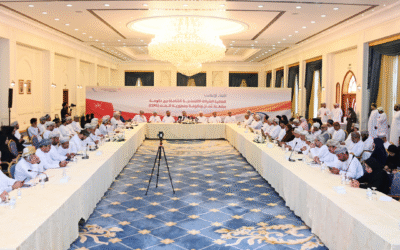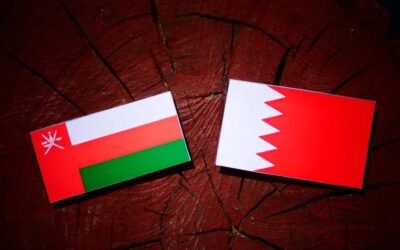The Ministry of Heritage and Tourism, in collaboration with the Natural History Museum in Bern and the University of Bern in Switzerland, has succeeded in discovering an extremely rare lunar meteorite sample weighing 59.5 grams. A scientific study conducted recently confirmed the rarity of this meteorite compared to other lunar meteorites worldwide. Its scientific significance lies in originating from the far side of the moon, unlike most lunar meteorites discovered on Earth, which typically come from the near side. This sample differs from those brought back by NASA missions, which focused on the near side. Consequently, this study will enable scientists to gain broader insights into and understanding of the characteristics and components of the moon’s far side. Moreover, this study represents a significant addition to the field of meteorite and asteroid sciences.
It’s worth noting that the discovery of this meteorite was on February 5, 2020; however, the analysis and study of the sample were recently completed, confirming its type and rarity. According to chemical analysis, the main minerals of this meteorite are plagioclase (70%), pyroxene (20%), olivine (5%), and smaller amounts of other minerals like iron, troilite, and merrillite. One of the notable features of this meteorite is the clarity of its outer crust, affected by the burning process during atmospheric entry, resulting in the formation of maskelynite and troilite minerals. Scientific studies have also confirmed that the outer layer of the sample contains fused lunar dust particles.
This achievement complements the various plans and programs of the Ministry of Heritage and Tourism in Oman for documenting meteorites, in collaboration with the Natural History Museum in Bern, Switzerland, since 2001. Over 7341 meteorite pieces, including lunar, Martian, and various asteroid fragments, have been documented, weighing over 7000 kilograms. The Ministry has also recovered these meteorite samples after completing the phase of scientific study and analysis, establishing a dedicated meteorite repository following the best global practices to ensure their preservation, sustainability, and scientific documentation.
As part of its digital transformation programs, the Ministry launched a scientific project in early 2022 in collaboration with the International Meteor Watch Network and several specialized scientific institutions. This project aims to monitor and document meteorites the moment they enter Oman’s airspace, accurately determining their geographical location. This enables field scientific research teams to access fresh fallen samples before they are affected by natural elements. These efforts culminated in the Ministry’s announcement of documenting “Al-Khadhf” meteorite, the first meteorite to be monitored and located using modern technologies, weighing a total of 22 grams. This achievement serves as evidence of Oman’s success in using modern technologies for field meteorite research, adhering to the best international scientific practices.
As part of its efforts to combat illegal trafficking of meteorites, the Ministry conducted a specialized workshop earlier this year titled “Meteorites in Oman and Combatting Illegal Trafficking”. The workshop aimed to raise awareness about meteorites, their scientific importance, legal regulations associated with them, and to empower customs inspection authorities at various ports, small and medium-sized companies in the tourism guidance sector, interested parties, researchers in geological heritage, combating illegal trafficking of cultural properties, postal companies, customs clearance, judicial control officers, and concerned individuals in museums. The workshop included an informative exhibition about meteorites and the Ministry’s efforts to organize this specialization and ways to raise awareness about combating illegal trafficking of this important national heritage.
In translation of the Ministry’s efforts to raise awareness of the scientific importance of meteorites, invest in them sustainably, and diversify and enhance tourist destinations in various provinces, the Meteorite Exhibition in Oman was opened in its third edition at the Commercial and Wok Building in the Wilayat of Sur, as part of a series of events celebrating Sur as the Arab Capital of Tourism for 2024. According to its various programs, the Ministry aims to establish informational exhibitions about meteorites, implement a number of specialized scientific publications that contribute to raising awareness about meteorites, their scientific importance, and utilizing them to create unique tourism opportunities and experiences.
mht.gov.om
Hassan Al Maqbali
Content Creator & Website Manager at Omanspire
Hassan Al Maqbali is a dedicated content creator and the website manager at Omanspire, where he writes passionately about Oman's culture, history, and the timeless stories that shape the nation’s identity. His work reflects a deep love for the Sultanate and a commitment to sharing its beauty with the world.
Driven by a desire to widen global understanding of Oman, Hassan creates narratives that present the country through diverse perspectives—capturing its people, heritage, landscapes, and evolving cultural heartbeat. Through Omanspire, he hopes to bring readers closer to the spirit of Oman, one story at a time.




